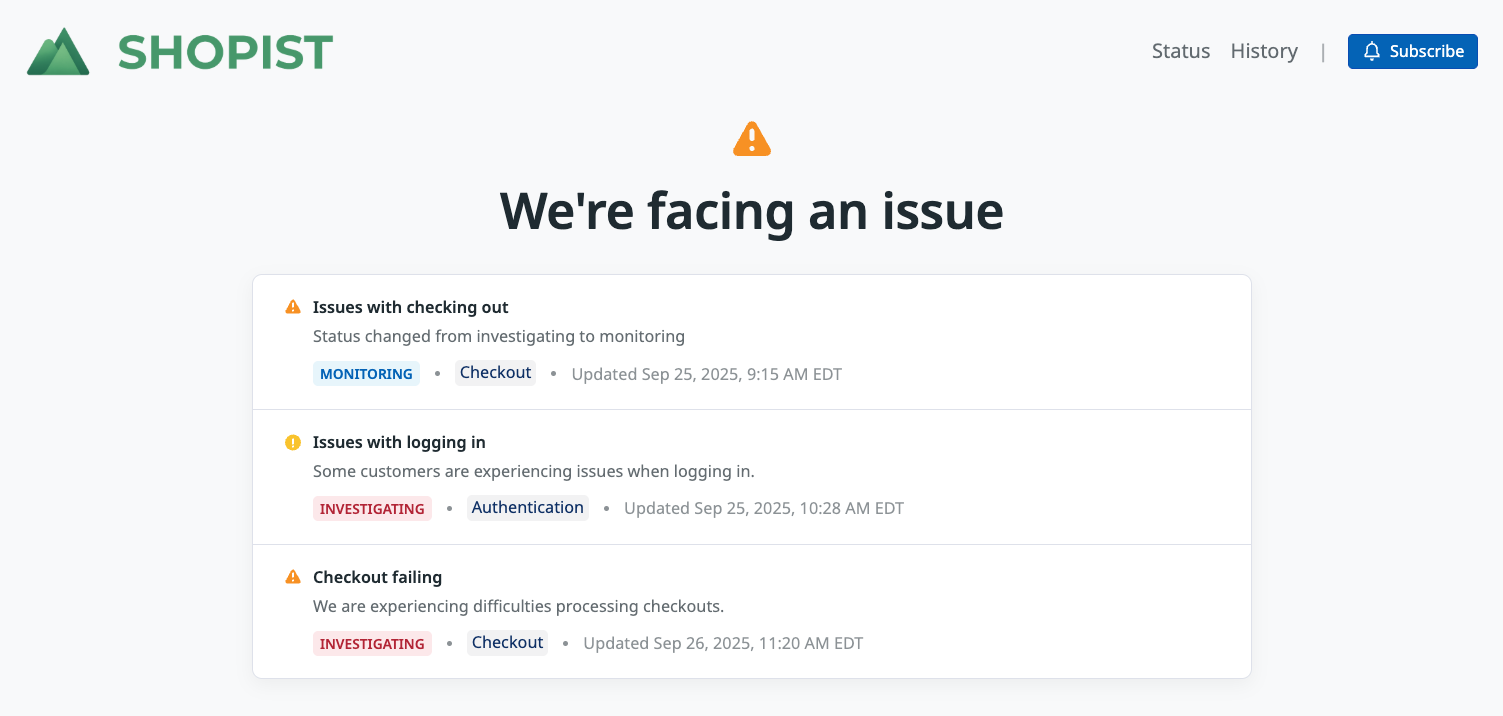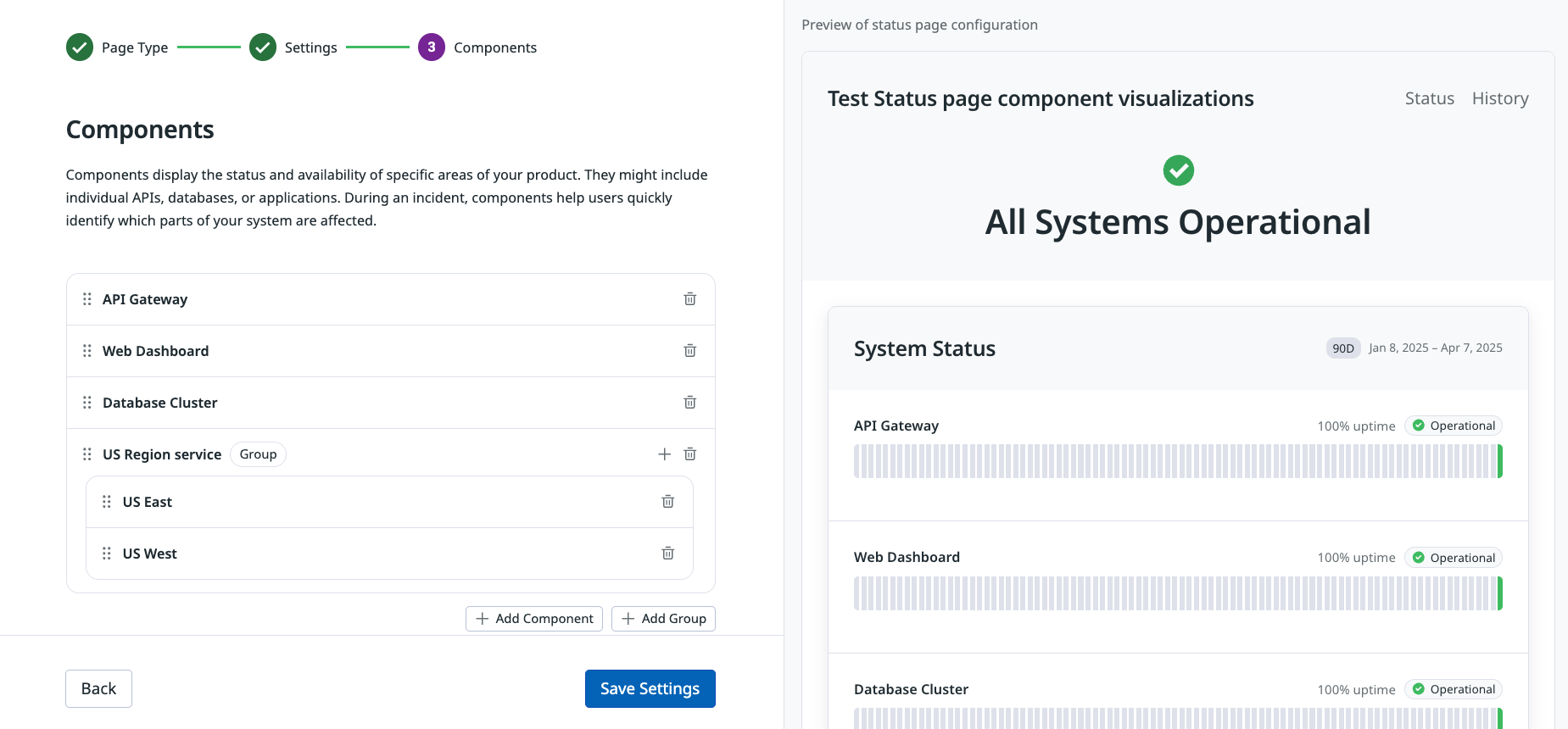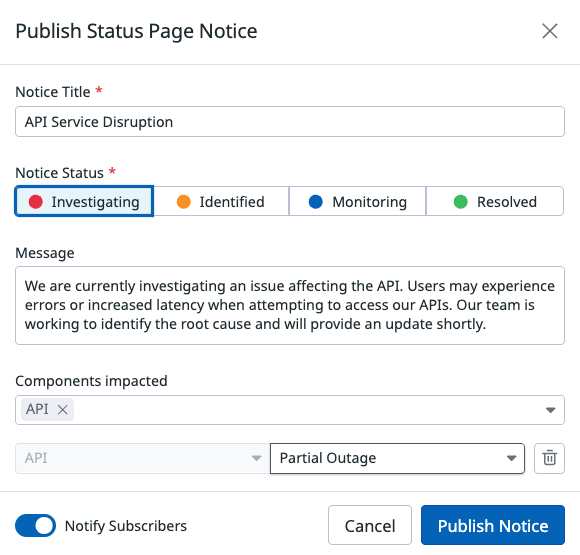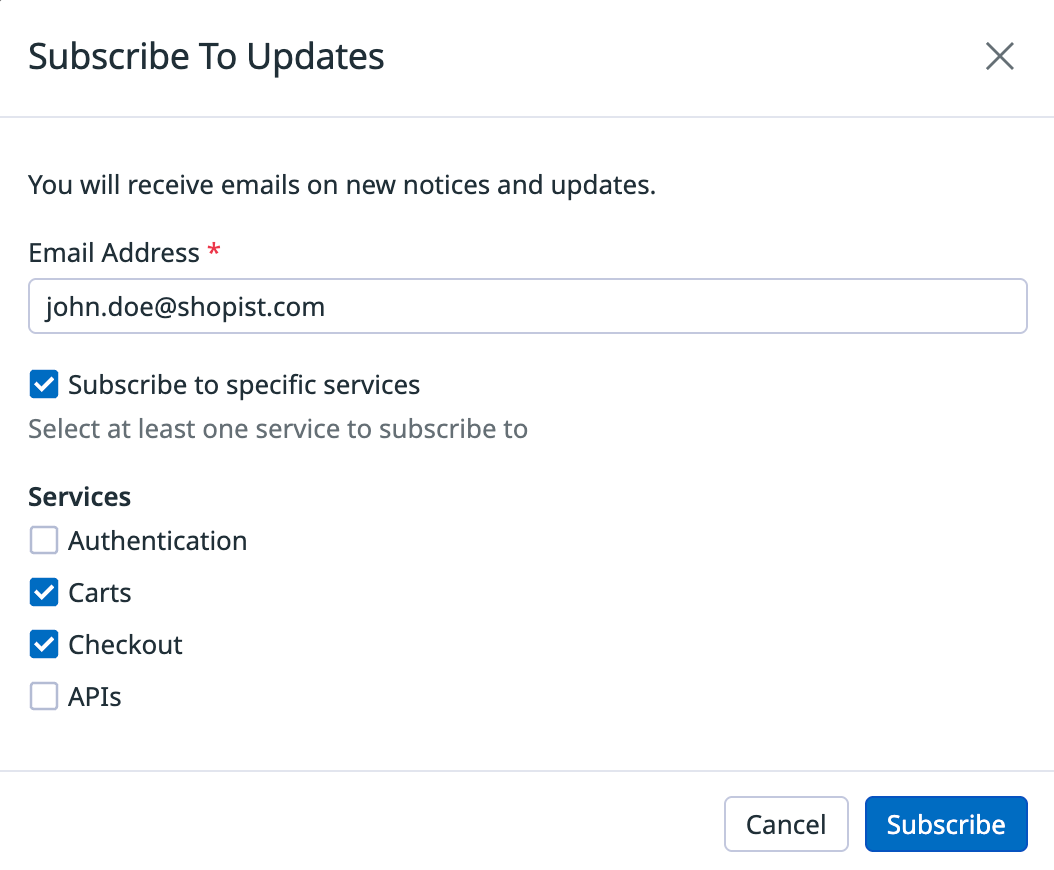- Principales informations
- Getting Started
- Agent
- API
- Tracing
- Conteneurs
- Dashboards
- Database Monitoring
- Datadog
- Site Datadog
- DevSecOps
- Incident Management
- Intégrations
- Internal Developer Portal
- Logs
- Monitors
- OpenTelemetry
- Profileur
- Session Replay
- Security
- Serverless for AWS Lambda
- Software Delivery
- Surveillance Synthetic
- Tags
- Workflow Automation
- Learning Center
- Support
- Glossary
- Standard Attributes
- Guides
- Agent
- Intégrations
- Développeurs
- OpenTelemetry
- Administrator's Guide
- API
- Partners
- Application mobile
- DDSQL Reference
- CoScreen
- CoTerm
- Remote Configuration
- Cloudcraft
- In The App
- Dashboards
- Notebooks
- DDSQL Editor
- Reference Tables
- Sheets
- Alertes
- Watchdog
- Métriques
- Bits AI
- Internal Developer Portal
- Error Tracking
- Change Tracking
- Service Management
- Actions & Remediations
- Infrastructure
- Cloudcraft
- Resource Catalog
- Universal Service Monitoring
- Hosts
- Conteneurs
- Processes
- Sans serveur
- Surveillance réseau
- Cloud Cost
- Application Performance
- APM
- Termes et concepts de l'APM
- Sending Traces to Datadog
- APM Metrics Collection
- Trace Pipeline Configuration
- Connect Traces with Other Telemetry
- Trace Explorer
- Recommendations
- Code Origin for Spans
- Observabilité des services
- Endpoint Observability
- Dynamic Instrumentation
- Live Debugger
- Suivi des erreurs
- Sécurité des données
- Guides
- Dépannage
- Profileur en continu
- Database Monitoring
- Agent Integration Overhead
- Setup Architectures
- Configuration de Postgres
- Configuration de MySQL
- Configuration de SQL Server
- Setting Up Oracle
- Setting Up Amazon DocumentDB
- Setting Up MongoDB
- Connecting DBM and Traces
- Données collectées
- Exploring Database Hosts
- Explorer les métriques de requête
- Explorer des échantillons de requêtes
- Exploring Database Schemas
- Exploring Recommendations
- Dépannage
- Guides
- Data Streams Monitoring
- Data Jobs Monitoring
- Data Observability
- Digital Experience
- RUM et Session Replay
- Surveillance Synthetic
- Continuous Testing
- Product Analytics
- Software Delivery
- CI Visibility
- CD Visibility
- Deployment Gates
- Test Visibility
- Code Coverage
- Quality Gates
- DORA Metrics
- Feature Flags
- Securité
- Security Overview
- Cloud SIEM
- Code Security
- Cloud Security Management
- Application Security Management
- Workload Protection
- Sensitive Data Scanner
- AI Observability
- Log Management
- Pipelines d'observabilité
- Log Management
- CloudPrem
- Administration
Status Pages
This product is not supported for your selected Datadog site. ().
Cette page n'est pas encore disponible en français, sa traduction est en cours.
Si vous avez des questions ou des retours sur notre projet de traduction actuel, n'hésitez pas à nous contacter.
Si vous avez des questions ou des retours sur notre projet de traduction actuel, n'hésitez pas à nous contacter.
Overview
Status Pages is part of Datadog’s Incident Response suite, alongside On-Call and Incident Management. It lets your team proactively communicate service availability and incidents with customers or internal stakeholders through a shareable web page.
Use Status Pages to:
- Share the availability of critical systems and features
- Communicate service disruptions clearly during incidents
- Reduce inbound support volume with proactive email notifications
Configure permissions
There are three RBAC permissions that are relevant to Status Pages. Users with the Datadog Admin Role have all the necessary permissions.
To create, update, or publish Status Pages, you must have status_pages_settings_read, status_pages_settings_write, and status_pages_incident_write RBAC permissions. For more information, see Access Control.
| Name | Description | Default Role |
|---|---|---|
Status Pages Settings Readstatus_pages_settings_read | View the list of Status Pages, the settings of each Status Pages, their Incidents, and launched Internal Status Pages. | Datadog Read Only Role |
Status Pages Settings Writestatus_pages_settings_write | Create and launch new Status Pages, and configure Status Pages settings. | Datadog Admin Role |
Status Pages Notice Writestatus_pages_incident_write | Publish and update Incidents. | Datadog Admin Role |
Create a status page
- In Datadog, navigate to Service Management > Status Pages.
- Click Create Status Page and follow the onboarding flow:
Field Description Status Page Type Choose who can access the page:
- Public - Anyone with the link can view
- Internal - Only authenticated users within your Datadog organization can viewPage name Displayed as the page header (if no logo is uploaded).
Example: Acme Cloud PlatformDomain Prefix Used as your status page subdomain prefix. For more information on custom domains, see the Set a custom domain section.
Example: shopist → shopist.statuspage.datadoghq.com
- Must be globally unique
- Lowercase, alphanumeric, and hyphenated
- May affect links if changed laterSubscriptions (optional) Enable users to receive email notifications about status page updates. When subscriptions are enabled, users can sign up to get notified about new notices and updates. You can turn subscriptions on or off for each status page. Note: Email subscriptions are double opt-in, email must be confirmed. Company logo, Favicon, or Email Header Image (optional) Upload a logo, favicon, or image to personalize the appearance of your status page and email notifications. - (Optional) Add components to show the status of individual services.
- Click Save Settings.A status page is not Live after you save your settings. To make the page available, publish your status page.
Add components
Components are the building blocks of your status page. Each one represents a service or feature your users care about. Some examples of components include:
- API Gateway
- Web Dashboard
- Database Cluster
- US Region Services
You can add components to your status page either on intial setup or through the status page settings:
- From your status page, click Settings and select the Components tab.
- Create individual components or a group of related components. You can associate notices with these components to reflect impact on your status page.
- Select a visualization type:
- Bars and Uptime Percentage
- Bars Only
- Component Name Only
Publish your status page
After you save your status page settings, click Launch Status Page to make the page available at its URL.
If you selected:
- Public, the page is immediately accessible to all visitors.
- Internal, access is limited to authenticated Datadog users in your organization.
Add a notice
Notices on Status Pages are carefully crafted messages posted to a public website to communicate system status. When an issue arises, you can communicate it clearly through your status page.
- From a status page, click Publish Notice to open a “Publish Status Page Notice” modal and provide:
Field Description Title Short, clear description of the incident
Example: Increased error rates on US regionStatus Current state of the incident:
- Investigating
- Identified
- Monitoring
- ResolvedMessage (optional) Additional details for your users
Examples: known cause, expected resolution timeComponents impacted One or more components impacted by the incident Impact Level of impact per component:
- Operational
- Degraded Performance
- Partial Outage
- Major OutageNotify Subscribers Toggle to send the notice to subscribers - Click Publish Notice.
After a notice is published, the notice:
- Appears on the Status Pages List under Active Notices.
- Updates the uptime bars for impacted components.
- Is visible in the notice history timeline.
You can post updates over time to keep users informed, and then mark the notice as Resolved.
Email subscriptions
Email subscriptions on status pages are double opt-in. After entering an email to subscribe, users receive a confirmation email and must click the confirmation link to activate their subscription. During this process, users can choose to receive notifications for the entire status page or select specific components they want to monitor. Users can manage their preferences and update their subscriptions at any time through the subscription management link included in notification emails.
For internal status pages, the subscription process is the same, but users must log in to the same Datadog organization to confirm their subscription and receive notifications.
Set a custom domain
To match your branding, you have the option to map your status page to a custom domain like status.acme.com.
- From your status page, click Settings.
- Select Custom Domain.
- Follow the instructions to enter your domain and add DNS records.
- Datadog automatically detects the DNS configuration and provisions an SSL certificate.
Custom domains require access to your DNS provider to add a CNAME or A record.
Note:
- DNS propagation may take several minutes.
- You can revert to the default Datadog domain at any time.
- Ensure DNS changes are made by someone with access to your domain registrar.
Further reading
Documentation, liens et articles supplémentaires utiles:




